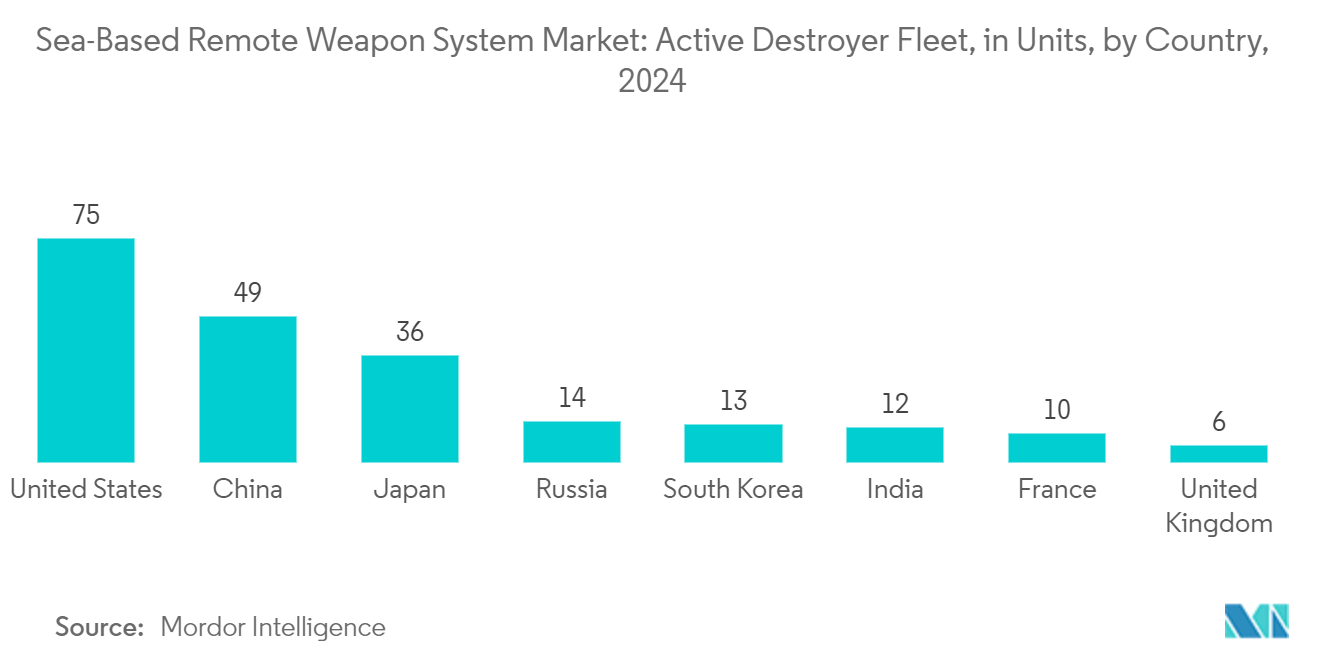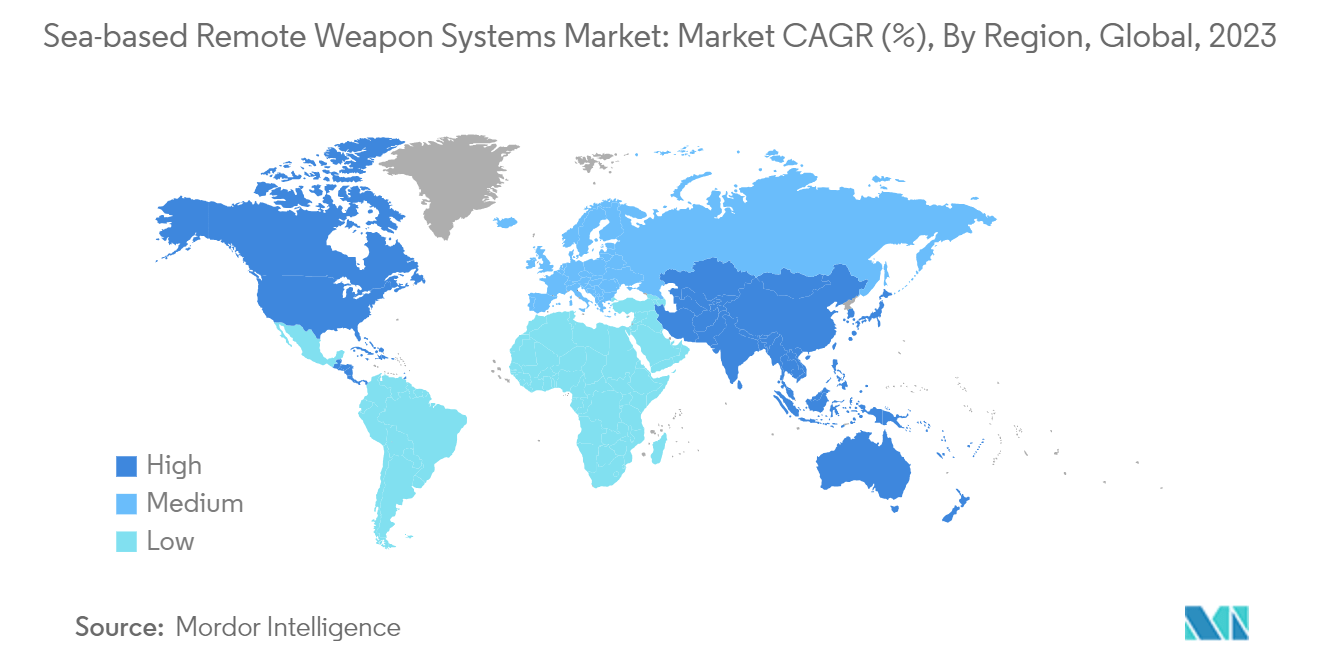Market Trends of Sea-based Remote Weapon Systems Industry
Destroyers to Account for Largest Market Share During the Forecast Period
Amidst escalating tensions and border disputes, countries are increasing their annual defense budget to construct destroyers. The Philippine Navy announced its plans to buy 25-30 warships, including destroyers, to modernize and expand its fleet by 2030. In December 2022, the second of the Project 15B stealth-guided missile destroyers built by Mazagon Dock Shipbuilders Limited (MDSL) was inducted into the Indian Navy. The destroyers are being built under Project 15-B, and the Indian government has signed a deal to acquire an advanced sensor and weapon systems package for under-construction warships for nearly USD 800 million.
The replacement programs in various countries to replace the current aging fleet of destroyers with modern detection and weapon systems are also propelling the market. According to the Defense Buildup Program, the Japan Maritime Self-Defense Force (JMSDF) will increase the number of Aegis destroyers (DDG) from the current fleet of eight to ten. The Japanese government has also decided to purchase 500 Tomahawk cruise missiles, which will be installed on JMSDF Aegis destroyers. During the forecast period, such procurement plans for destroyers will boost the demand for sea-based remote weapon systems.

Asia-Pacific to Register Highest Growth During the Forecast Period
The Asia-Pacific region is expected to witness the highest market growth as the nations invest significant resources to ensure the combat readiness of existing systems. Thus, several weapon modernization programs are underway to effectively upgrade the capabilities of the regional armed forces to respond to security threats and accomplish urgent, critical, and dangerous strategic missions.
The various countries in the Asia-Pacific are rapidly increasing their military expenditure due to growing political tensions and border issues. China was the most significant military spender in the region, with USD 296 billion in military spending in 2023. The Chinese People's Liberation Army Navy (PLAN) is rapidly replacing obsolescent and single-purpose ships in favor of larger, multirole combatants with advanced anti-ship, anti-air, and anti-submarine weapons and sensors.
Furthermore, due to political tensions with China, countries like India, Japan, the Philippines, and Australia are modernizing and upgrading their naval vessels and combat systems to enhance their naval capabilities. As of November 2022, the Indian Navy had 45 vessels of various types under construction and planned to build a strong navy of 200 vessels by 2050. In August 2023, the government recently cleared a USD 2.4 billion deal to manufacture fleet support vessels (FSVs), which the Indian Navy urgently requires. Under the Make in India initiative, the country rapidly increased its indigenously produced warships and initiated Project 75 Alpha. Under this project, six submarines will be designed by the Navy's in-house Directorate of Naval Design and built by the Shipbuilding Centre at Visakhapatnam. The construction is expected to commence on 2023-24, while the first submarine will enter service in 2032. Such developments will likely contribute to the market growth in the coming years.


